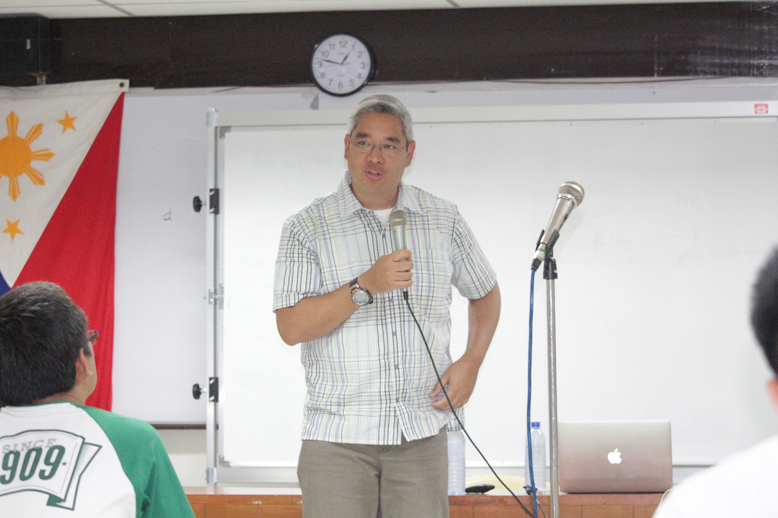
The School of Environmental Science and Management (SESAM) co-hosted with the UPLB Environmental Science Society invited Dr. Meinhard Bayani Cardenas, an Associate Professor and William T. Stokes Centennial Teaching Fellow from the Department of Geological Sciences, Jackson School of Geosciences, The University of Texas at Austin for the 34th Talakayan Series for Environment and Development (TSED). Dr. Cardenas’ lecture entitled “Devastation of aquifers from super typhoon Haiyan’s storm surge and Taking stock of Earth’s groundwater and its renewability” was held last 13 July 2015 at the SESAM Lecture Hall.
Dr. Cardenas completed his PhD in Earth and Environmental Science (Hydrology) at the New Mexico Institute of Mining and Technology. He also took his MS in Geology from the University of Nebraska-Lincoln and BS in Geology from the University of the Philippines Diliman. His research interests are hydrology and hydrogeology, its physical (primary focus), chemical and ecological processes. He was also a recipient of numerous awards in his academic career.
Dr. Cardenas said that they made a detailed documentation of flood levels, groundwater table elevations and salinity, electrical resistivity, and modelling after super typhoon Haiyan hit Samar. “We found that Haiyan’s storm surge reached 7m above sea level along Samar Island, Philippines, which led to contamination of crucial aquifers by infiltrating seawater,” Dr. Cardenas said. And he said that a contaminated surficial aquifer will take years to recover. He added, “strategies for reducing vulnerability to intense storm surge-caused groundwater contamination and mitigating its effects are needed… especially by the government institutions.”
For his second lecture, He mentioned, “we wanted to take stock of Earth’s groundwater – how much groundwater there is on Earth, and how much is renewable.” For the study, they made three methods: first, they quantified the total volume of groundwater using hydro-geologic databases and quantified the porosity of Earth’s upper 2 km (terrestrial); then by compiling tritium (3H) concentrations (a groundwater age indicator of less than 50 years) of aquifers around the world and then they used groundwater flow and age simulations. He concluded that groundwater, with a renewability timescale of 50 years, the total volume is 1,410,000 km3, and less than 6% of all groundwater is renewed. “Pumping in agricultural regions can deplete groundwater quickly at current rates and half of groundwater-supported agriculture outpaces the hydrologic cycle under natural conditions,” Dr. Cardenas stressed, and because of this, he hopes on a better utilization of groundwater.
The ‘Talakayan’ is a regular seminar series as an avenue for experts in environmental science to share their knowledge and experiences and to inspire students to pursue their research and academic initiatives. It was attended by 35 students, faculty and staff from SESAM and other colleges in UPLB.

